| BOOKS |
| |
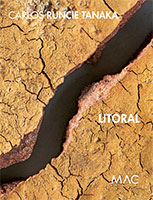 |
Litoral: Carlos Runcie Tanaka |
| Museo de Arte Contemporáneo MAC-Lima..2017 |
| LITORAL (COASTLINE) brings together sculptures by Carlos Runcie Tanaka (Lima, 1958), made between the years 1988 and today. Designed to highlight their organic link with central aspects of the artist’s vision, this selection of works explores the connections of an individual creative process to a geological and biological past absorbed through constant observation and research. It also emphasizes an active reflection about ecosystems now affected by changing conditions, that contain an admirable diversity of living forms, familiar to the eye by their ubiquity in the sea and the coastal strip of our country. The works of Carlos Runcie Tanaka are ceramic sculptures that often refer to a fossil world and speak of antediluvian times: allusions to a natural environment before the presence of human beings on the face of the Earth, made from clay and burned by fire at more than 1,200° C, to enable the imagination to encompass a dimension of time beyond the anthropocentric horizon, when the sea and the planet were other. |
| Litoral: Carlos Runcie Tanaka 2017.pdf |
| |
| |
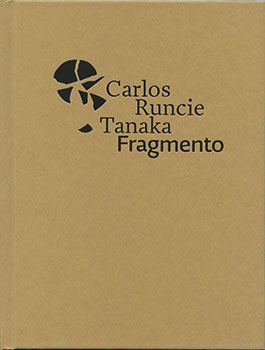 |
Fragmento: Carlos Runcie Tanaka |
| Station Museum of Contemporary Art..2015 |
| Carlos Runcie-Tanaka is an artist with superb artistic skills, compelling visual insights and a profoundly spiritual sense of mystery. He was born in Lima, Peru; his heritage is Peruvian, Japanese and English. Lima is the multi-cultural capital of Peru on the Pacific coast of South America. With over eight million inhabitants, Peru's demographic consists of Indigenous people, Europeans, Americans and Afro-Peruvians. The predominant population are the Mestizos - they are of mixed blood of European and Indigenous ancestry. This cultural diversity is important to issues of personal and ethnic identity in all of contemporary art. Tanaka is engaged in integrating his various sources and influences. His artwork presents contemporary universal symbols of interethnic unity. He has absorbed the lessons of traditional pottery and pioneered an approach that goes beyond obvious or direct references to traditional Peruvian, Japanese and European art. As a result, Tanaka's works also bring the strands of his identity together with ancient mysteries that have a powerful contemporary resonance. |
| https://www.amazon.com/Fragmento-Carlos-Runcie-James-Harithas/dp/1495146464?tag=artfactsnet0f-20&linkCode=w13&linkID=XY2CRROD2O7AWTREUS&ref_=assoc_res_sw_pe_dkp_cra_t0_result_2&ref-refURL=http%3A%2F%2Fwww.artfacts.net%2Fen%2Fartist%2Fcarlos-runcie-tanaka-23115%2Fprofile.html |
| |
| |
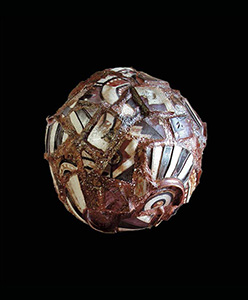 |
Carlos Runcie Tanaka |
| Fundación Wiese / AFP Sura-Integra..2012 |
In order to pay tribute to the career of one of the most important Peruvian contemporary artists in recent decades, AFP Integra and the Wiese Foundation have published this special book that reviews and illustrates the life and work of Carlos Runcie Tanaka. The publication, considered a deluxe edition of over 200 pages, gathers the artist's work where you can appreciate his wit and the constant research of his environment, accompanied by a great love for Peru and his creative vision. The book is extensively illustrated with images of works and site-specific installations produced by the artist from 1978 to date, accompanied also by introductory texts by Jorge Villacorta, the editorial project director, and a comprehensive selection of art critics reviews and comments that have accompanied the work of the artist through the years.
Art critic Jorge Villacorta points out, “There are no clear answers for the trenchant questions that assail and distress our conscience as we find ourselves daily at a crossroads, in the quandary of our lapsed-belief in a national promise that still awaits to be redeemed. In his art, Carlos Runcie Tanaka has pursued a way towards defining a clear, life-enhancing dimension, made of poetry and trust in the seemingly boundless potential of matter. For the last thirty years, the artist’s self-awareness has developed hand in hand with an understanding of the Peruvian imaginary, and this has expressed itself as a rare and acute perception of the psychology that underlies the construction of aesthetic paradigms that can be artistically and socially relevant for the present. At times he seems to have worked in synchronicity with fresh, nascent sensibilities pointing to the opening of new cultural horizons. At others, his work has uncannily appeared to have crystallized thought-processes aiming to provide responses to critically urgent questions concerning identity and history. By conjuring deeply reflexive and striking visions, he presents those who approach his work with an invitation to openly share in the calm and the stillness, and gain an insight of a hardearned peace of heart and mind”. |
| Libro Carlos Runcie Tanaka.pdf |
|
| |
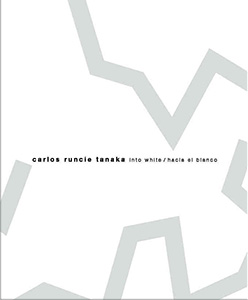 |
Carlos Runcie Tanaka |
| Fundación Wiese / ICPNA..2011 |
This catalogue has been published by the Instituto Cultural Peruano Norteamericano (ICPNA) and Fundación Wiese on the occasion of the exhibition into white / hacia el blanco by Peruvian visual artist Carlos Runcie-Tanaka held in year 2010 at ICPNA’s main gallery in Miraflores, Lima, Peru.
The book’s core subject is the installation into white / hacia el blanco, the latest work produced by the artist. The project involves the use of materials such as glass, paper, ceramic and video. The first section of the book presents images of the site specific installation and the work in progress, accompanied by introductory texts by art critics Élida Román, Gustavo Buntinx and Jorge Villacorta, among other writers. The second part of the book comprises a visual chronology of the artist’s work starting from year 1978 with texts written by Miguel Unger and the artist himself. |
| Libro Into White / Hacia el blanco.pdf |
| |
| |
| |
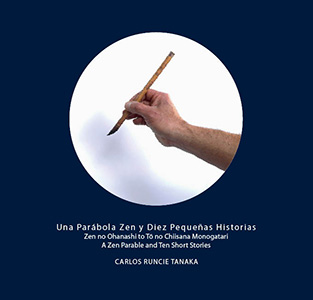 |
Una Parábola Zen y Diez Pequeñas Historias / A Zen Parable and Ten Short Stories |
| Asociación Peruano Japonesa..2007 |
| This book has been published under the auspices of the Peruvian-Japanese Association on the occasion of the exhibition Una Parábola Zen y Diez Pequeñas Historias / Zen OhanashiTo To no Chiisana Monogatari / A Zen Parable and Ten Short Stories by Peruvian visual artist Carlos Runcie-Tanaka, at the Gallery Ryoichi Jinnai in the Peruvian-Japanese Cultural Centre in 2007, Lima, Peru. The first section of the book presents images accompanied by reflexive texts by the artist himself. The second part of the book presents a visual chronology of the artist's work from year 1978 to 2007. In the foreword to the exhibition, curator Jorge Villacorta points out, "In light of the old Zen parable of the shepherd boy who loses his ox and goes after it, finding and retrieving it, thus attaining enlightenment, Carlos Runcie-Tanaka, in this exhibition, identifies and pursues the traces that Japan has left on his imagination, and thus, in his artistic creation. (...) To get to the heart of Japan's memory and imagination, the artist has awakened memories and personal symbols intertwined in his work, allowing him to inquire into the nature of his relationship with the country and its culture. (...) ". |
| Libro Una Parábola Zen y Diez Pequeñas Historias.pdf |
| |
| |
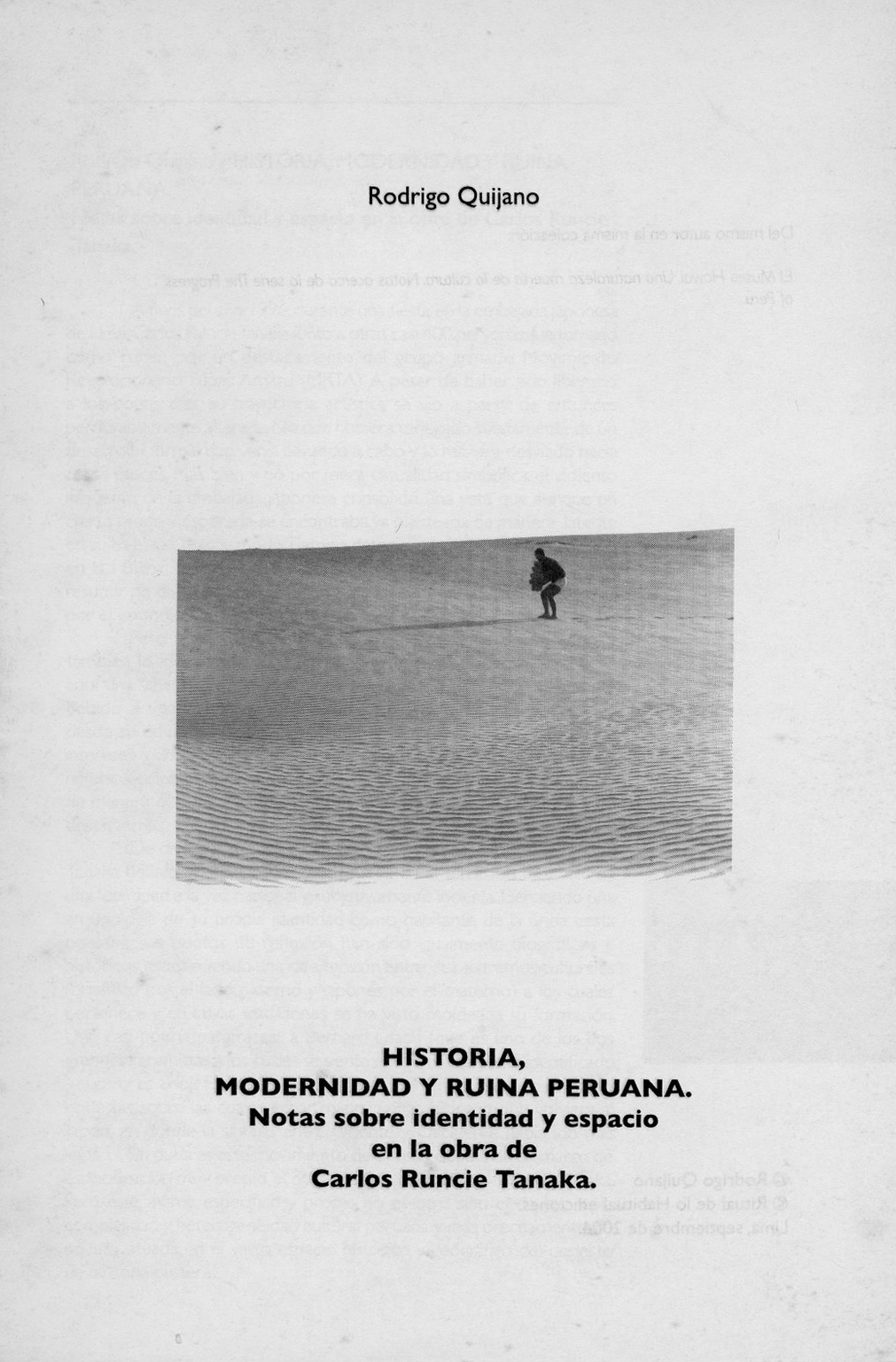 |
Historia, Modernidad y Ruina Peruana. Notas sobre identidad y espacio en la obra de Carlos Runcie Tanaka |
| Ritual de lo Habitual ediciones 2004 |
| Libro/Folleto – Ensayo |
| Historia, Modernidad y Ruina Peruana. Notas sobre identidad y espacio en la obra de Carlos Runcie Tanaka.pdf |
| International Center for the Arts of the Americas at the museum of Fine Arts, Houston |
| |
| |
| |
| |
| |
| |
| |
| |
|
|
|
|
| |
| CATALOGUES |
| |
|
|
|
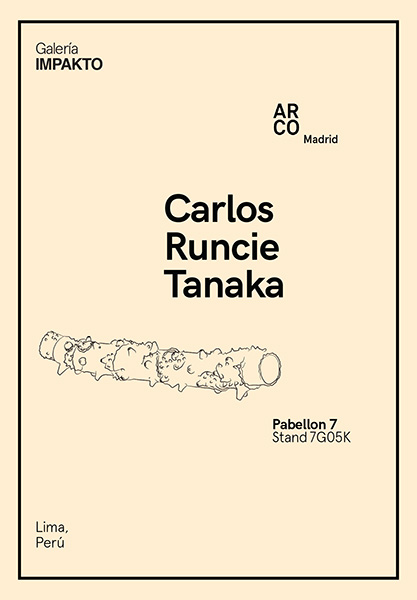 |
Carlos Runcie Tanaka |
| ARCOmadrid 2019 – Feria Internacional de Arte Contemporáneoeo en el Perú |
| Catalogue.2019 |
| Catálogo Carlos Runcie Tanaka.pdf |
| |
| |
| |
| |
| |
| |
| |
|
|
|
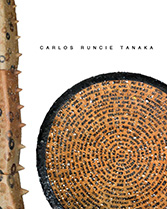 |
Carlos Runcie Tanaka |
| Catalogue.2015 |
| Catálogo Carlos Runcie Tanaka.pdf |
| |
| |
| |
| |
| |
| |
| |